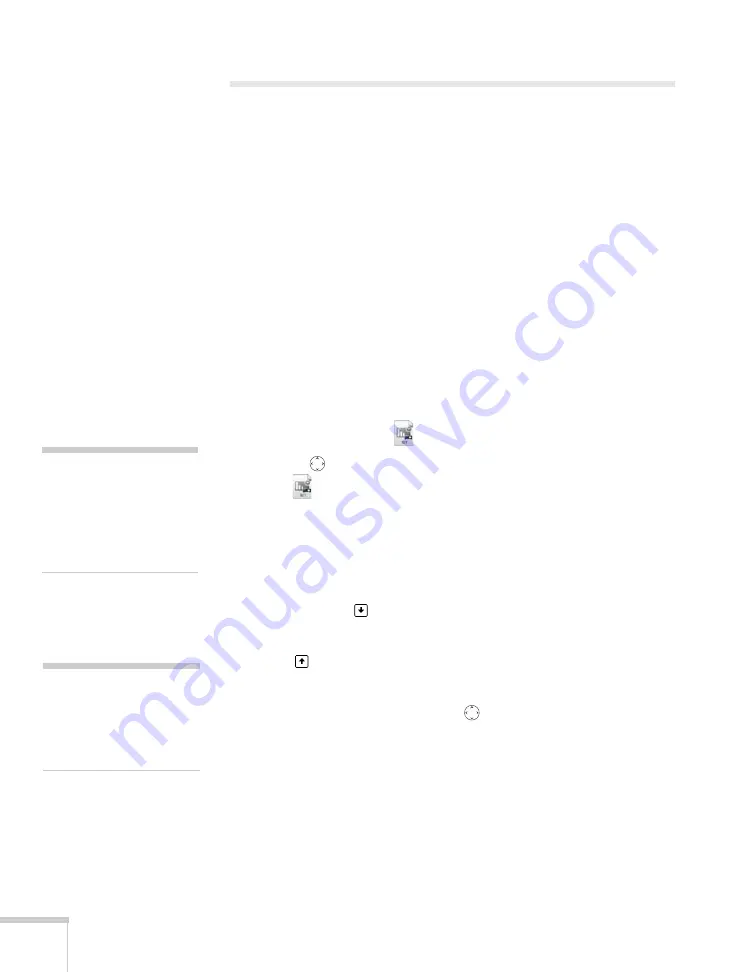
130
Presenting From a USB Drive, Camera, or CompactFlash Card
Presenting Scenarios
Before you begin, connect the USB drive (see page 52) or insert the
CompactFlash card containing the scenario to your projector (see
page 53).
Then follow these steps to present your scenario:
1. Turn on the projector, if it’s not already on.
■
If your scenario is set to autorun, it will start as soon as the
projector warms up.
■
If your scenario is not set to autorun, you need to start it
manually. Continue with the following steps.
2. Select EasyMP as the source by pressing the
EasyMP
button on
the remote control.
JPEG files are displayed as thumbnails. Other files or folders are
displayed as icons. A
scenario icon identifies a scenario file.
3. Use the
pointer button on the remote control to highlight
your
scenario file and press
Enter
. In a moment, your
scenario begins playing.
Controlling Your Scenario
While your scenario is running, use the remote control as follows:
■
Press
Enter
or
Page down
to display the next animation,
slide, or image, or to begin playing a movie.
■
Press
Page up
to display the previous slide or image, or to
replay a movie.
■
Press the appropriate side of the
pointer button to rotate a
slide or image on the screen.
■
To exit the scenario at any point, press the
Esc
button. Select
Exit
and press the
Enter
button.
note
Your files may take up more
than one screen. If so, use the
Page up
and
Page down
buttons on the remote
control to view all your files.
note
Even if your scenario is set to
change slides automatically,
you can still change slides
manually as described here.
Summary of Contents for PowerLite 1825
Page 1: ...PowerLite 1825 Multimedia Projector User sGuide ...
Page 14: ...14 Welcome ...
Page 38: ...38 Presenting With the Remote Control ...
Page 56: ...56 Connecting to Computers Cameras and Other Equipment ...
Page 110: ...110 Presenting Through a Wireless Network ...
Page 152: ...152 Fine Tuning the Projector ...
Page 210: ...210 Technical Specifications ...
Page 222: ......






























